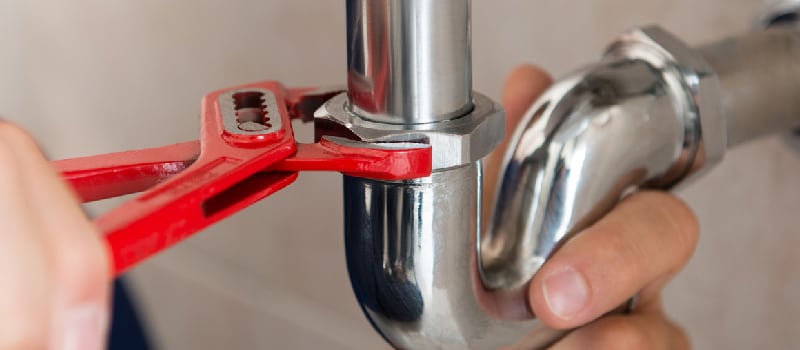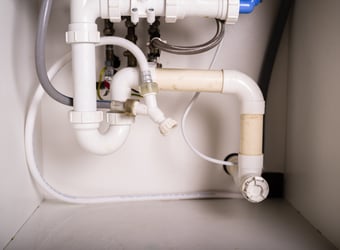Emergency Plumbing Tool Kit: Equip Yourself for Unexpected Waterworks
Emergency Plumbing Tool Kit: Equip Yourself for Unexpected Waterworks
Blog Article
They are making a few good points on Plumbing Tools You Should Keep in Your Tool Kit overall in this post which follows.

Homeowners need to be equipped for plumbing emergencies in case of sudden problems with their plumbing fixtures. This perhaps might be a broken pipe, therefore, causing leaks, or any of the other common plumbing emergencies. It is therefore necessary to have some basic plumbing tools. Using the best plumbing tools will give you the required results and of course, makes simple DIY plumbing repairs possible. You might not need these tools right away, but they will prove useful at some point. And you don’t need to have it all after all you’re not a professional plumber. However, there are some basic tools you should always have in your home. Here are 5 of such plumbing equipment you may find helpful at some point.
Teflon tape:
This is also commonly called plumber's tape. It is used to tightly seal pile joints and fitting. The tapes are in rolls cut to specific sizes and widths. It is an impenetrable seal and because of this, it can be used to hold off leaks till professional help arrives.
A basin wrench:
This is another tool that should be in every home. When doing plumbing repairs, it may be necessary to loosen up bolts and sink plumbing fixtures. The basin wrench makes this possible and is also used to tighten nuts as well. This wrench has a head that pivots at the back and front. This helps to reach smaller nuts or hold the faucet knobs and pipes.
Pliers:
The type of pliers recommended for plumbing is the tongue-and-groove pliers. They are used to tighten and loosen nuts and bolts. They can also be manipulated to hold nuts and bolts in place and use to hold and pick items. Pliers are very valuable tools for DIY plumbers.
Auger:
This is also known as a drain snake and is used for clearing drain clogs. This tool is inserted into blocked drains to pull out clogs and gunk from the drain. You put it in the drain and twist it to break clogs into tinier bits for easy cleaning.
Plunger:
Plunger is a very good tool for resolving plumbing issues. It is used to clear clogs in toilets, kitchen sinks, and other drains in your home. There are different types of plungers for handling different types of drain clogs so you should have different types and sizes of plunger depending on the one that fits your drains. There are two main types of plunger: the flange and the cup. Each of these has its specific applications for clearing up drain clogs.
Conclusion
It's wise to have these tools in the home. However, we should not undermine the fact that you might not have all of them or be able to use them for all likely plumbing issues that may occur. In this case, go for the most optimal thing which is a plumber's number. This is a sure backup that works every time especially when it a reliable emergency plumber that will respond promptly. Get a reliable plumbing technician’s number now so you can call for help when you need it.
Signs You Need to Call an Emergency Plumber
Most people don’t anticipate having a plumbing problem. After all, your home’s piping is probably the last thing on your mind, even as you wash your hands, flush the toilet, and take a shower. If you think you’re having an emergency, call a plumber as soon as possible.
TOP 10 REASONS TO CALL AN EMERGENCY PLUMBER
Gurgling sounds: Something could be blocking your sewer line if the toilet gurgles when you drain the bathtub, or if you hear gurgling from the sink while the washing machine runs. Call an emergency plumber before the problem develops into a backed-up sewer! Stubborn toilet clog: If a foreign object has lodged itself in the drainpipe, a plunger will only get you so far. An emergency plumber has more advanced tools and techniques to clear stubborn toilet clogs. Shower or sink won’t drain: You may find that you can’t clear a stopped-up sink or shower drain with the tools available to you. To get things flowing again, call a plumber for drain cleaning services. Sounds of water running: If you hear water running through the pipes while no one is using the plumbing, there could be a leak somewhere. You need expert leak detection to locate and fix the source of the problem before it causes any more harm. Sewage odor: Be wary of bad smells with no apparent source. A broken sewer vent or pipe could be to blame, which is not only unpleasant but could also cause environmental and health issues. Professional sewer repair should set things right again. Low water pressure: Sometimes, you can blame a lack of water flow on a clogged aerator. Unscrew this from the faucet and soak it in vinegar to remove mineral deposits. If the problem persists, call a professional for help. Frozen pipes: Low water pressure in the winter could be caused by a frozen pipe. You must act fast to prevent the pipe from bursting and potentially causing significant water damage. Burst or dripping pipes: If you’re too late, and a frozen pipe has burst, don’t panic—turn the main water shut-off valve to stop the flow of water and prevent property damage until an emergency plumber arrives. No hot water: A problem with your water heater can make a hot shower suddenly turn ice-cold. Fortunately, an emergency plumber can perform the repair you need to restore your supply of hot water. Leaking fixture or hose: If you see water flowing out from under the dishwasher, washing machine, or ice maker, the hose behind the appliance may have sprung a leak. See if you can tighten the connection to stop the dripping. Otherwise, turn off the water and call an emergency plumber.

I came across that write up on Basic Plumbing Tools You Should Have on Hand while perusing the web. If you liked our post kindly be sure to pass it around. Many thanks for your time. Kindly pay a visit to our blog back soon.
Free Quote Report this page